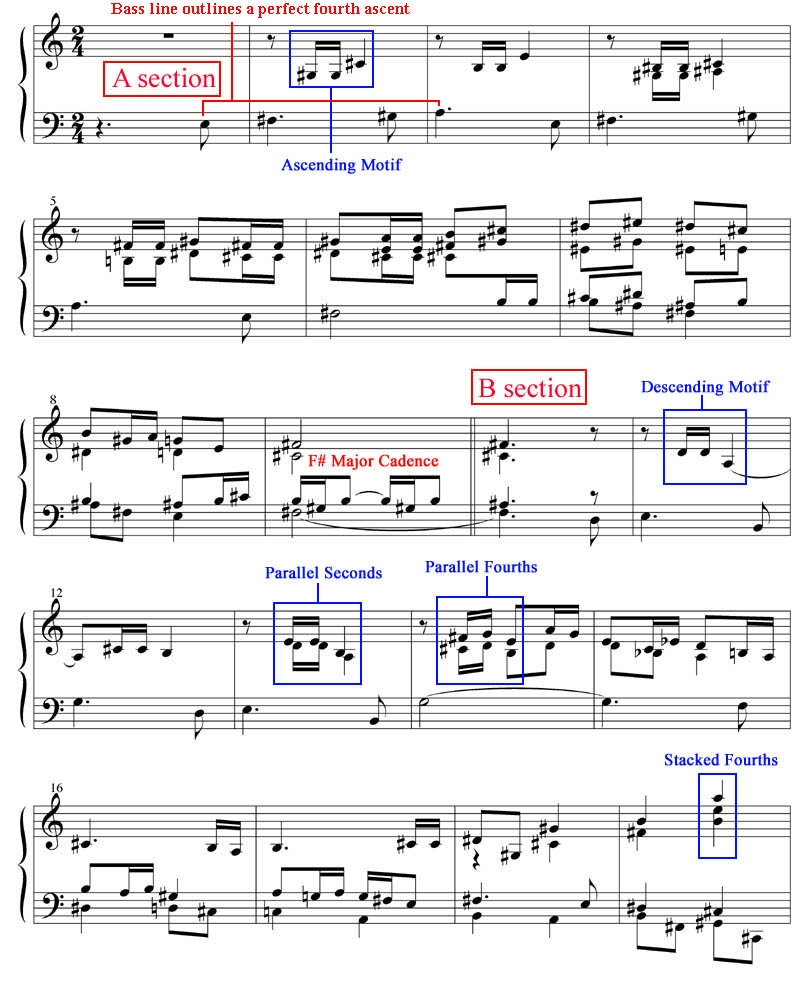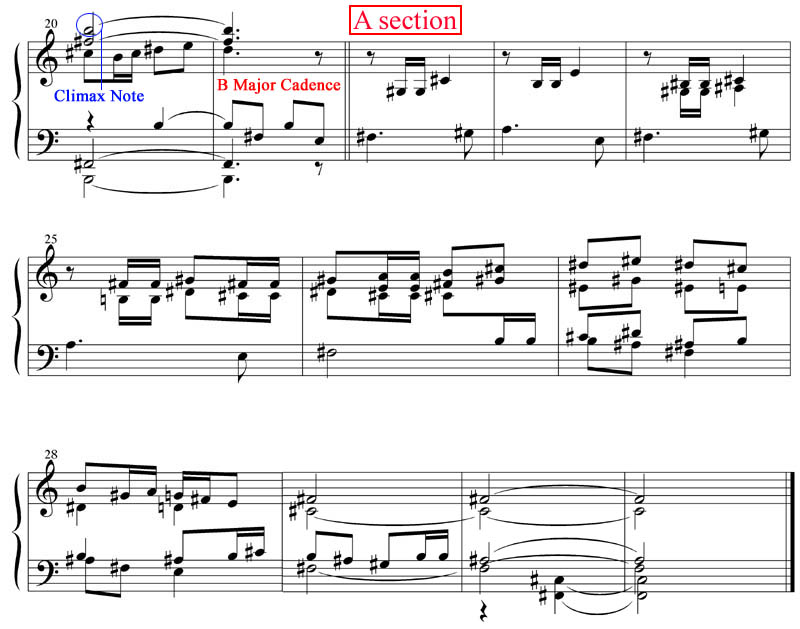mp3 download (piano version)


Continue for more examples of quartal harmony concepts applied to Common Practice forms.
Dr. Justin Henry Rubin © 2005
Many young composers are under the impression that since tertian harmony is based on thirds, that quartal harmony is a replacement, being based on fourths. However, in practice (and in the literature) it is more of an augmentation of the tertian vocabulary, not a substitution. Some of the first prominent composers to write pieces implementing quartal concepts, such as Hugo Distler, Arnold Schönberg, and Paul Hindemith, rarely simply stacked perfect fourths on top of one another (an exception would be Schönberg's Chamber Symphony Op. 9 in the slow section). Instead, they re-examined the concepts of consonance vs. dissonance. If one rotates a series of stacked fourths over the tonic in C (C, F, and Bb) one notices that also inherent in the combination is the minor seventh/major second (C to Bb). As such, the intervals of the major second, perfect fourth, and minor seventh all can be considered consonances - intervals that no longer need resolution.
In addition, the use of a minor seventh over the tonic implies a flatted seventh scale degree in the key - a modal influence over a tonal one. The sharing of sonorities between the tertian and quartal harmonic realms carries over to the often ambivalent articulation of tonal and modal structures. Once again, rather than choosing one system over another, composers have taken a more inclusive approach, allowing for both languages to co-exist within the confines of a single work.
An approach often observed regarding voice leading in pieces that employ quartal harmony is the somewhat archaic use of parallel perfect intervals. Derived from one of the earliest forms of Western music, organum uses parallel fourths, fifths, and octaves to reinforce its modal melodies. Although disallowed in subsequent eras, this sonority only expands the modern composer's palette if used judiciously.
Index
A. Ternary Piece using Quartal Harmony
B. Quartal Harmony Fugue
C. Chorale Setting using Quartal Harmony
AUDIO and MIDI files can be listened to on this page or downloaded separately here.
In the following example, we have adopted a structure already familiar to us from a previous lesson, the ternary form.
1. In the A section we have created a unified relationship between treble and bass within the quartal construct: the motive is distinguished by an ascending perfect fourth while the bass line outlines a perfect fourth ascent. The major second is also the interval at the point of entrance of the treble line. Note that tertian harmonies (as in bar four) are freely dispersed in the course of the music.
2. The relationship between the two sections is also in alignment with the traditional ternary form - however adapted here to suit the quartal construct. Note that B also acts as a developmental section, introducing an inverted motive, a more varied texture, and a climactic passage (bars 19-20).
mp3 download (piano version)


Continue for more examples of quartal harmony concepts applied to Common Practice forms.
The views and opinions expressed in this page are strictly those of the page author.
The contents of this page have not been reviewed or approved by the University of Minnesota.
View Privacy Statement
Copyright © 2005 by Justin Henry Rubin
http:// www.d.umn.edu /~jrubin1
The University of Minnesota is an equal opportunity educator and employer. ![]()